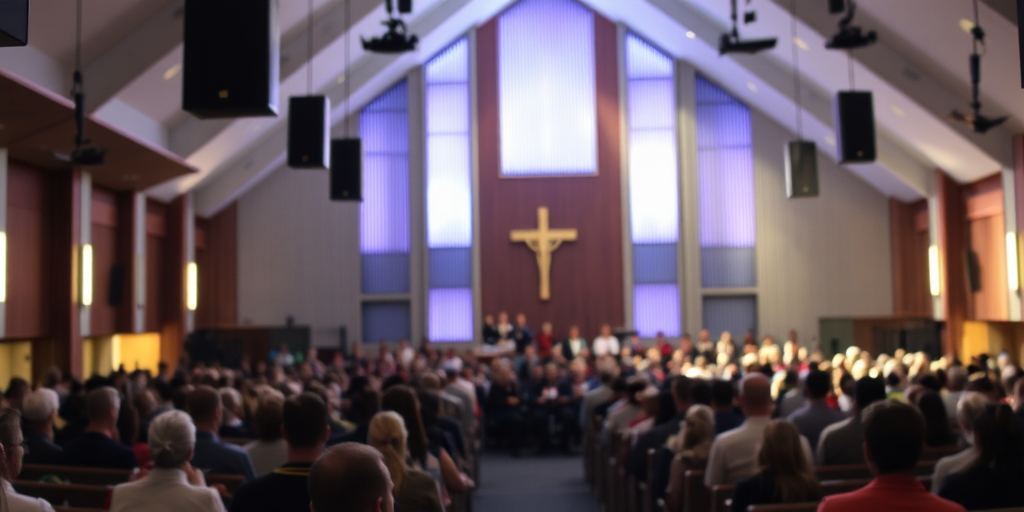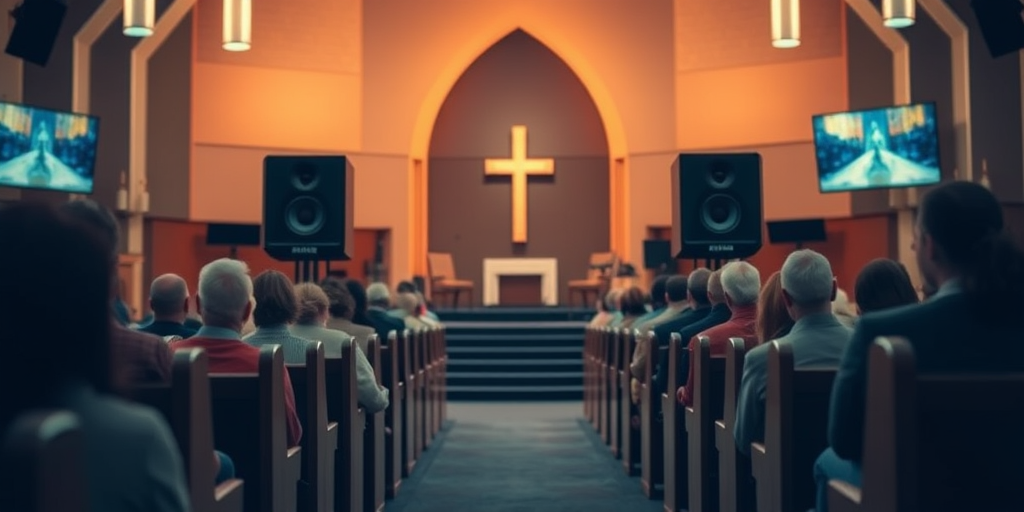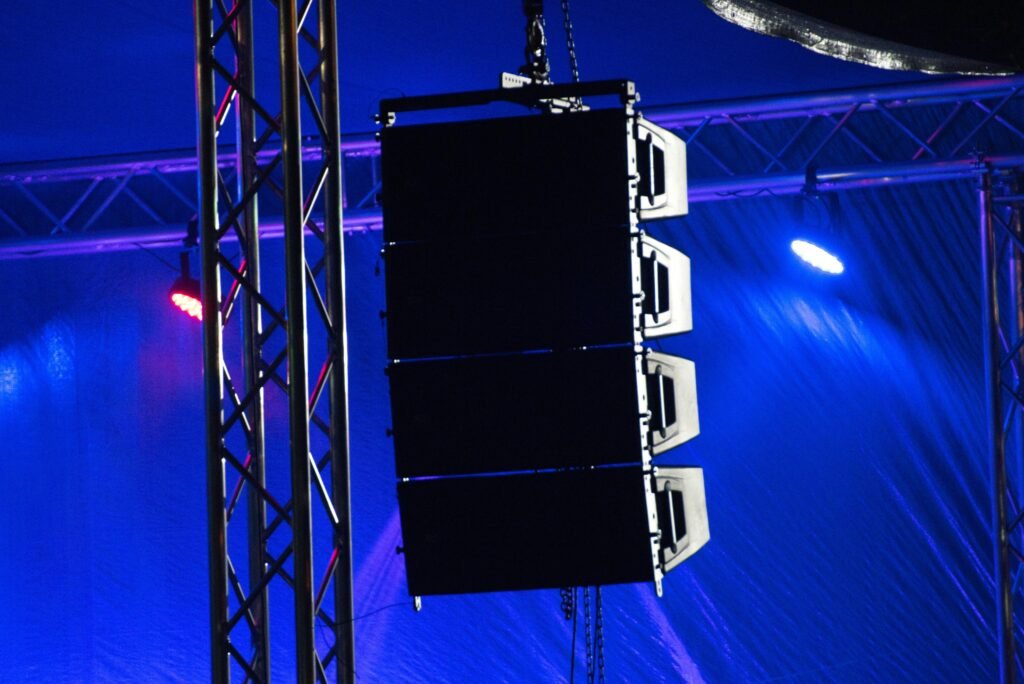Have you ever wondered if poor audio quality could be holding back the true power of your church singing? We believe that every hymn deserves to be heard with inspiring clarity. In this post, we dive into how choosing the right speakers can transform your worship experience by ensuring every note reaches every heart in the sanctuary.
We’ll unpack the benefits of advanced audio specifications and smart installation techniques that deliver clear, uplifting sound. Join us as we explore the essential features that make for exceptional audio, setting the stage for a truly transformative musical experience.
Key Specifications and Technical Features of the Best Speakers for Church Singing

Our technical analysis reveals that optimal sound for congregational singing depends on a detailed set of speaker specifications. Essential metrics include a published one-meter SPL of 132 dB, adjusted to target around 97 dB at the front row when accounting for distance and mix crest factor.
We also emphasize extra power headroom—typically an addition of 3 to 6 dB—to prevent clipping and ensure a clean sound throughout service. Larger drivers, up to 15-inch in size, offer a more linear and clear reproduction of music, while off-axis response plays a key role in maintaining smooth frequency tapering even for listeners positioned away from the direct line of sound.
- coverage angles
- SPL measurements
- power headroom
- driver sizes
- off-axis response
These key specifications form the backbone of a robust and reliable sound system, ensuring optimum clarity for congregational music. By integrating precise coverage angles, we guarantee that every seat experiences uniform audio. Accurate SPL measurements translate into balanced sound intensity, while sufficient power headroom protects speakers against distortion during dynamic worship passages.
Larger driver sizes contribute to the depth and richness of the audio, and superior off-axis response ensures that clarity is maintained even when the audience is not directly in line with the speakers. The combination of these technical features results in a system that not only meets the acoustic challenges of large sanctuaries but also enhances the overall worship experience. Our detailed specifications empower churches to deliver inspiring clear sound that uplifts the congregation and fosters a more engaging, spiritually enriching environment.
Best Speaker Models for Church Singing: Trusted Brand Recommendations
While technical specifications are essential, choosing from top-performing models ensures you’re not just chasing numbers but investing in real-world, worship-ready performance. Based on industry benchmarks and live church environments, here are some of the best speakers for church singing:
- es4QSC K12.2: Known for its outstanding clarity, 2000W power, and 75° coverage angle, the K12.2 handles vocals and instrumentation with equal finesse. Its onboard DSP allows for vocal-specific tuning, making it a favorite in modern sanctuaries.
- JBL PRX915: With a maximum SPL of 131 dB and a 15” woofer, the PRX915 delivers powerful, clean sound even in large churches. Its wide coverage and Bluetooth control make it both reliable and easy to manage during services.
- Yamaha DZR12: Offering pristine audio with up to 139 dB SPL, the DZR12 combines high power with advanced DSP and a 90° x 60° dispersion pattern. It’s ideal for reproducing both speech and music clearly in reverberant spaces.
- Electro-Voice EKX-15P: This model strikes a balance between affordability and performance. With a 15” driver and built-in DSP presets for vocals, it’s an excellent choice for churches looking for rich lows and sparkling highs without distortion.
- Bose F1 Model 812: Designed with flexible vertical coverage, the F1 adapts well to varied room layouts, making it ideal for churches with unconventional seating arrangements or high ceilings.
These speaker models are trusted by audio engineers and church tech teams alike. They not only meet the technical benchmarks outlined earlier—like adequate SPL, wide coverage angles, and off-axis clarity—but also offer the durability and usability required in worship settings. Investing in these models means less troubleshooting, more reliability, and above all, enhanced musical worship that inspires the congregation.
Installation and Placement Tips for Optimizing the Best Speakers for Church Singing

Proper installation and placement of speakers are crucial for delivering balanced, clear sound throughout the sanctuary. By ensuring that every seating area benefits from uniform audio coverage, congregants can experience every note and lyric with uplifting clarity. Software like Ease Focus 3 allows us to simulate speaker coverage and optimize angles, making the installation process precise and efficient.
Equally important is the consideration of audience layout. Using measurement techniques with tools such as Open Sound Meter helps us assess the sound distribution from the front, middle, and back rows. Positioning speakers high on stands and strategically dividing the audience area ensures optimal performance, even in challenging acoustic environments. This attention to detail transforms sound into an active part of the worship experience, enhancing congregational engagement and unity.
For effective installation, we follow several practical methods. These methods are essential for achieving optimal speaker aiming, covering every inch of the chapel with inspiring sound:
- Measure audience rows
- Use simulation software
- Employ laser pointer techniques
- Adjust speaker angles
- Verify uniform coverage with reference mics
Each step ensures that the entire congregation is enveloped in clear, impactful audio. By measuring seating zones, simulating acoustic behavior with advanced software, and employing precise aiming techniques, we create an environment where every worshiper can fully participate in the sacred experience.
Maintaining uniform sound not only elevates the overall performance but also reinforces the communal spirit of the service, ensuring that every voice is heard and every hymn resonates with clarity.
Final Words
In this article, we explored key audio considerations for enhancing church singing.
We examined technical features, installation tips, and trusted recommendations to ensure every seat receives clear sound.
Our discussion underlined factors like coverage angle, durability, and optimal power headroom—all essential for unmatched performance. We believe that investing in the best speakers for church singing creates an environment where uplifting worship and vibrant community connections flourish.
FAQ
Q: What is the best sound system for a small church?
A: For small churches, we recommend a system combining powered speakers (like JBL PRX or QSC K series), a digital mixer (12-16 channels), and 2-4 microphones, delivering clear sound coverage for up to 200 people.
Q: How much does a typical church sound system cost?
A: A quality church sound system typically ranges from $3,000 to $10,000, including speakers, mixer, microphones, and basic installation. Premium systems with advanced features can exceed $15,000.
Q: What are the essential components for a church speaker system?
A: A complete church speaker system needs main speakers, a mixer board, microphones, monitors, cables, and amplifiers. Include at least two main speakers and a subwoofer for balanced coverage.
Q: How should church speakers be positioned for optimal sound?
A: Mount speakers at head height of the back row, angled slightly downward, with 75-90° coverage angles. Use laser pointers for precise aiming and ensure even distribution throughout the sanctuary.
Q: What speaker specifications are most important for church settings?
A: Focus on speakers with 130+ dB SPL capability, 75-90° coverage angles, and sufficient power headroom (3-6 dB extra). Look for 12-15 inch drivers for clear, linear sound reproduction.
Q: Which brands offer the best church sound systems?
A: Leading brands include JBL, QSC, and Yamaha, offering reliable systems with excellent clarity and coverage. These manufacturers provide comprehensive warranty coverage and proven performance records.
